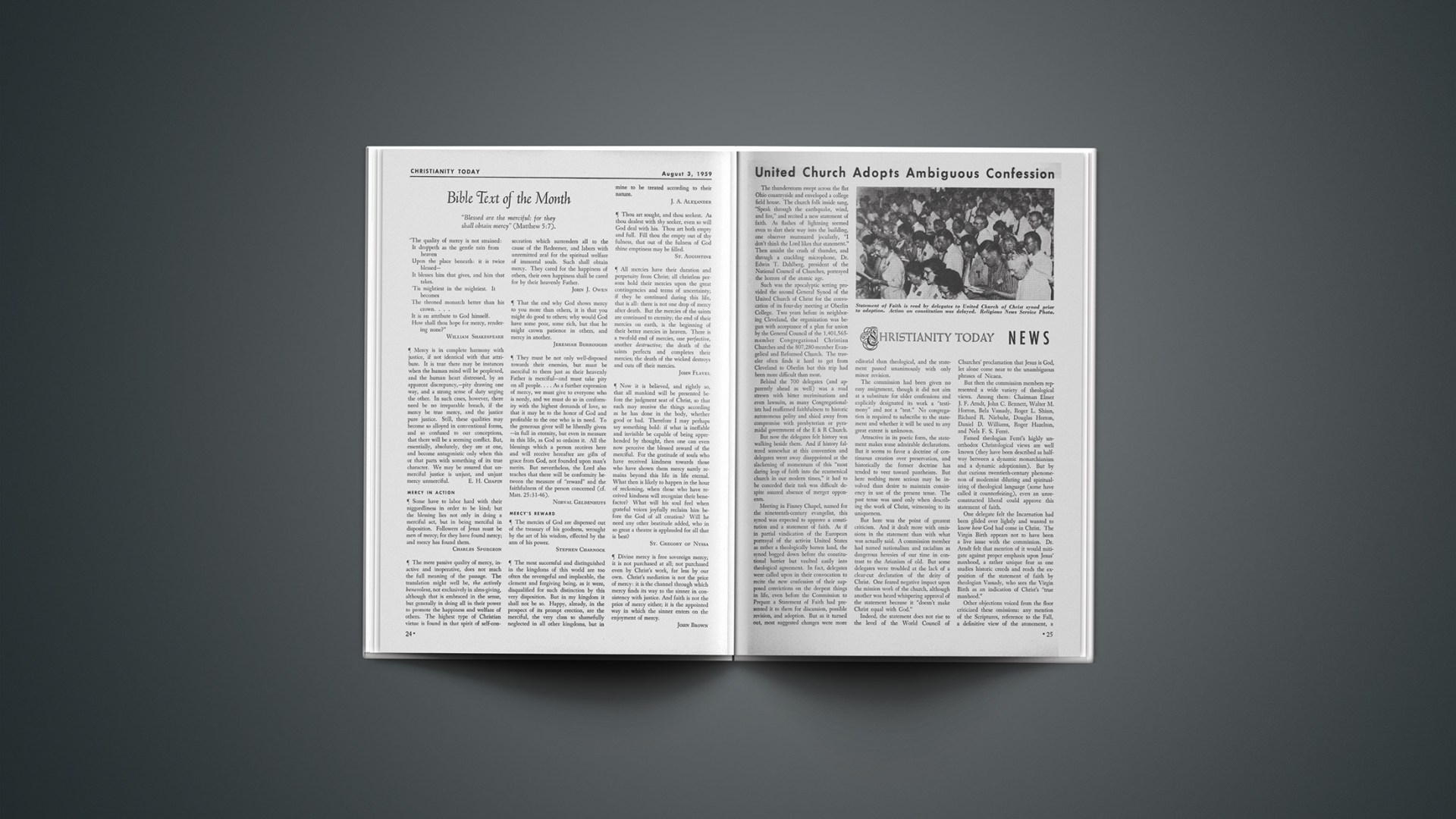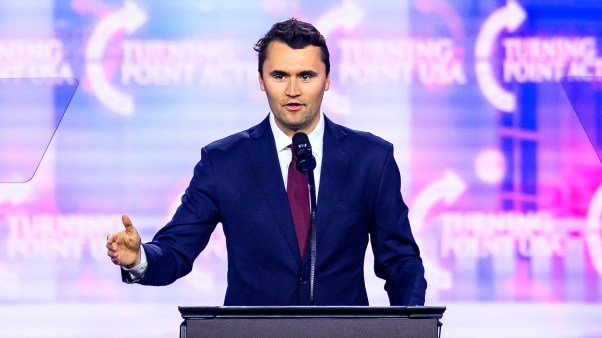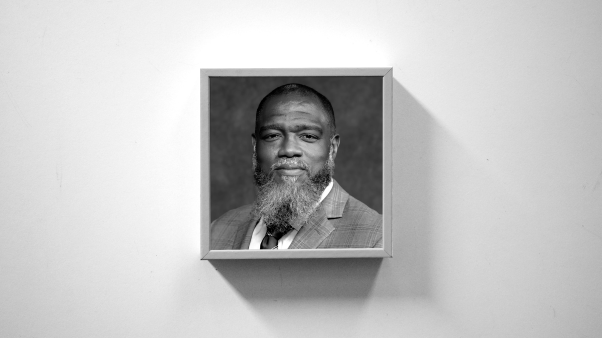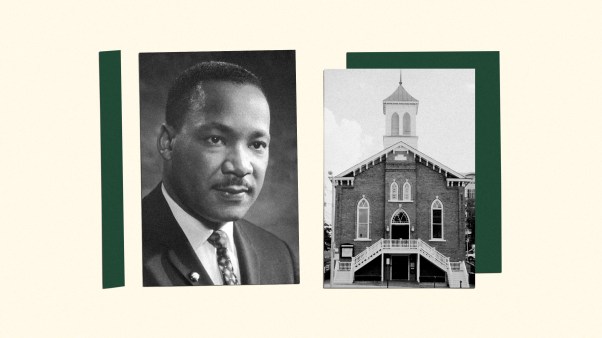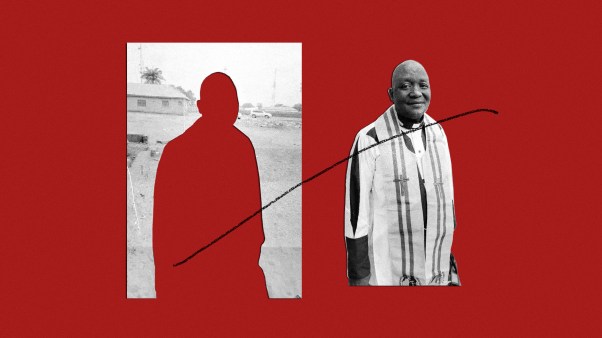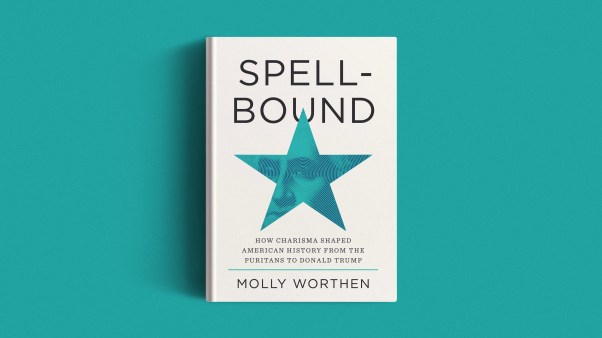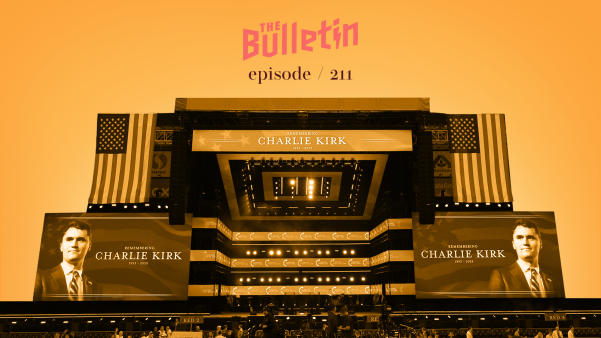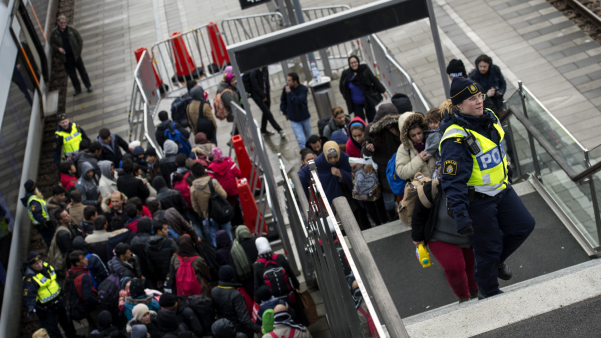NEWS
CHRISTIANITY TODAY
The thunderstorm swept across the flat Ohio countryside and enveloped a college field house. The church folk inside sang, “Speak through the earthquake, wind, and fire,” and recited a new statement of faith. As flashes of lightning seemed even to dart their way into the building, one observer murmured jocularly, “I don’t think the Lord likes that statement.” Then amidst the crash of thunder, and through a crackling microphone, Dr. Edwin T. Dahlberg, president of the National Council of Churches, portrayed the horrors of the atomic age.
Such was the apocalyptic setting provided the second General Synod of the United Church of Christ for the convocation of its four-day meeting at Oberlin College. Two years before in neighboring Cleveland, the organization was begun with acceptance of a plan for union by the General Council of the 1,401,565-member Congregational Christian Churches and the 807,280-member Evangelical and Reformed Church. The traveler often finds it hard to get from Cleveland to Oberlin but this trip had been more difficult than most.
Behind the 700 delegates (and apparently ahead as well) was a road strewn with bitter recriminations and even lawsuits, as many Congregationalists had reaffirmed faithfulness to historic autonomous polity and shied away from compromise with presbyterian or pyramidal government of the E & R Church.
But now the delegates felt history was walking beside them. And if history faltered somewhat at this convention and delegates went away disappointed at the slackening of momentum of this “most daring leap of faith into the ecumenical church in our modern times,” it had to be conceded their task was difficult despite assured absence of merger opponents.
Meeting in Finney Chapel, named for the nineteenth-century evangelist, this synod was expected to approve a constitution and a statement of faith. As if in partial vindication of the European portrayal of the activist United States as rather a theologically barren land, the synod bogged down before the constitutional barrier but vaulted easily into theological agreement. In fact, delegates were called upon in their convocation to recite the new confession of their supposed convictions on the deepest things in life, even before the Commission to Prepare a Statement of Faith had presented it to them for discussion, possible revision, and adoption. But as it turned out, most suggested changes were more editorial than theological, and the statement passed unanimously with only minor revision.
The commission had been given no easy assignment, though it did not aim at a substitute for older confessions and explicitly designated its work a “testimony” and not a “test.” No congregation is required to subscribe to the statement and whether it will be used to any great extent is unknown.
Attractive in its poetic form, the statement makes some admirable declarations. But it seems to favor a doctrine of continuous creation over preservation, and historically the former doctrine has tended to veer toward pantheism. But here nothing more serious may be involved than desire to maintain consistency in use of the present tense. The past tense was used only when describing the work of Christ, witnessing to its uniqueness.
But here was the point of greatest criticism. And it dealt more with omissions in the statement than with what was actually said. A commission member had named nationalism and racialism as dangerous heresies of our time in contrast to the Arianism of old. But some delegates were troubled at the lack of a clear-cut declaration of the deity of Christ. One feared negative impact upon the mission work of the church, although another was heard whispering approval of the statement because it “doesn’t make Christ equal with God.”
Indeed, the statement does not rise to the level of the World Council of Churches’ proclamation that Jesus is God, let alone come near to the unambiguous phrases of Nicaea.
But then the commission members represented a wide variety of theological views. Among them: Chairman Elmer J. F. Arndt, John C. Bennett, Walter M. Horton, Bela Vassady, Roger L. Shinn, Richard R. Niebuhr, Douglas Horton, Daniel D. Williams, Roger Hazelton, and Nels F. S. Ferré.
Famed theologian Ferré’s highly unorthodox Christological views are well known (they have been described as halfway between a dynamic monarchianism and a dynamic adoptionism). But by that curious twentieth-century phenomenon of modernist diluting and spiritualizing of theological language (some have called it counterfeiting), even an unreconstructed liberal could approve this statement of faith.
One delegate felt the Incarnation had been glided over lightly and wanted to know how God had come in Christ. The Virgin Birth appears not to have been a live issue with the commission. Dr. Arndt felt that mention of it would mitigate against proper emphasis upon Jesus’ manhood, a rather unique fear as one studies historic creeds and reads the exposition of the statement of faith by theologian Vassady, who sees the Virgin Birth as an indication of Christ’s “true manhood.”
Other objections voiced from the floor criticized these omissions: any mention of the Scriptures, reference to the Fall, a definitive view of the atonement, a radical treatment of Christ’s resurrection and of any future resurrection, and any reference to Christ’s return. One asked for less reaction against the old liberalism and thus more ethical content, while another pleaded for room for modern prophets and apostles like Kagawa and Schweitzer alongside biblical prophets and apostles.
Commission members boasted of a more extensive treatment of the Christian life than found in most creeds (though in an “existential age” there is always danger of Christian-centered, rather than Christ-centered, affirmations). One could wish there had been affirmation of the mystical union, so basic to Christian life.
To a suggestion that the statement sided with Eastern Orthodoxy on the filioque controversy, chairman Arndt replied that it does not take a position one way or the other on the matter and that the committee did not desire a “definition of doctrinal positions in the document.” If this policy gives little encouragement to theology, it does offer a bright prospect to those committed to a doctrinally undefined ecumenism.
Not all ecumenically-minded persons are enthused about merging of churches of unlike doctrine and polity, for the ultimate goal of many such folk is cooperation rather than organic union. Perhaps a curiosity of modern ecclesiastical history will be the E & R move toward unity with Congregationalists rather than with one of the many Presbyterian groups. Twentieth-century lessening of interest in historic Christian doctrine will possibly be adduced as a prime cause.
Congregationalist roots are found in sixteenth and seventeenth-century England and then in colonial New England, the churches later uniting with some Disciples of Christ churches. The E & R Church, its greatest strength in Pennsylvania, itself results from a merger of a Reformed church originating in Zwingli’s Zurich and the Rhineland and the Evangelical Church, which was an American transplanting of the effort of the Emperor of Prussia in 1817 to bring together for political reasons Lutheran and Reformed churches.
As for the current merger, leaders seem unsure of its present exact legal status, but they do boast about its oneness in fellowship. A New York federal court case against the merging bodies contains no request for injunction, and delegates to this year’s General Synod came expecting to approve the proposed constitution. Then if two-thirds of the E & R synods and two-thirds of the local Congregational churches (of those voting) approved, the way would be clear for the biennial General Syond of 1961 to put it in force. But delegates had only received copies of the constitution three weeks before synod began, hardly time for proper study. Some expressed shock and disappointment at leaders’ recommendations for delay (which would amount to two years) to avoid possible embarrassments resulting from hasty action. So the synod decided to buy a year’s time (maximum estimate: $75,000) by reconvening in special session in 1960 to vote on the constitution, thus leaving a year for local church and synod ratification.
Perhaps to blunt charges that this year’s synod was a “do-nothing body” in respect to the constitution, a resolution proposed by Yale Divinity School’s Liston Pope approving the proposed constitution as “an excellent working document” was passed. And considerable time was given for discussion of the draft.
It represents an ambitious attempt to synthesize Presbyterian and Congregational polities. Described as Presbyterian at the top and Congregational at the local level, it has been attacked by Congregationalists as promising local autonomy only to see it denied in the by-laws, where, for example, conferences and associations are given controls over clergy. Local Congregational churches, once in the United Church, will have no vote on future constitutional amendments or future church mergers. The latter point was raised on the floor but excited no discussion.
But no sooner had church leaders predicted smooth sailing through the entire convention, than an undercurrent of Congregationalist dissatisfaction erupted on the last evening. Speakers rose and asked an honest airing of issues which had been troubling delegates. After some veiled efforts toward this end, it developed that Congregationalists were unhappy over the constitutional provision for what they look upon as fragmented or compartmentalized boards which report directly to General Synod, as distinguished from the old inclusive Congregational boards. Part of the agitation was said to have been caused by the constitutional disposition under the Board for Home Missions of an association concerned with the denomination’s Negro colleges, a move which seemed to some a rigid perpetuation of a case of segregation with which they are uncomfortable. But it is a difficult situation complicated by legal necessities in regard to college financial arrangements.
In any case leaders confess to some deep differences of opinion in this area along denominational lines. These may never be fully resolved. But apparently there had been a gentlemen’s agreement to confine discussion of such matters to committees, and E & R President James E. Wagner (also co-president of the United Church with Congregationalist Fred Hoskins, both being reelected at this synod) was deeply cut. With a grim smile he spoke of this “unfortunate sequence of events” which had violated the hope that such matters would be wrestled with “in smaller meetings.” “The E & R Church” (very few of whose delegates had spoken on the constitution) “has been deeply affronted by the advantage taken here tonight,” but would not “return like for like.”
Up popped eminent Congregationalist Helen Kenyon to deny there had been any “affronts or unseemly events.” Another rose to say that extended debate had improved morale, but it was agreed any further arguments be put in writing.
Dr. Stephen Szabo, president of the E & R Magyar Synod, asked that the constitution be changed to allow the continued identity of his synod as heretofore. Others objected to the provisions for the practice of social pronouncements being made by a council in the name of the entire church.
But the general feeling of the leaders seems to be that of obedience to an overpowering concept of union—that any alternative could not conceivably be the will of God—that merger opponents are largely to be explained in terms of timidity of spirit or perhaps captiousness.
For this is not only a “united” church but a “uniting” church, and subsequent mergers are hopefully anticipated with this constitution as a guide. With a synthesis which may have given Hegel trouble, leaders have at times found it difficult to sound statesmanlike as they have sought to define the resulting polity. One E & R leader differentiated it from Presbyterianism by identifying the latter with an “unwonted and arbitrary exercise of authority.” Many ask, “Can a true Congregationalism come out of such synthesis, and what of those who still desire true Congregationalism?”
As one observes the merging body, he may find himself musing over the variety of important names to be found in the grand heritage of the components: Luther, Melanchthon, Zwingli, Calvin, Oecolampadius, Bullinger, Thomas Goodwin, John Owen, John Cotton, Thomas Hooker, Thomas and Alexander Campbell, and so on. Among these were giants who changed the face of Europe and mightily influenced the history of America. For the serious student of church history who does not believe that twentieth century insights have cancelled those of the previous 1,900 years, the question will not down whether the issues which divided these luminaries have been fairly met. Some may ask whether we have bred a latter-day race of giants who have resolved the differences of the earlier ones. Or were those old issues relatively unimportant?
A high official in the United Church of Canada has warned united churches of the need to preserve for the present “their historical confessional roots as one means of averting any easy inclination toward a watered-down, syncretistic form of the great Christian tradition.” When insights of past church titans are trimmed to match those of others, the trimmer’s criteria for cutting are vital. Will he cut so deeply as to deny himself in the end the depth of Christian fellowship he so earnestly desires?
‘Let Freedom Ring’
The National Association of Congregational Christian Churches held its sixth annual meeting in Los Angeles June 30-July 2 and elected as its moderator Gordon W. Kingsbury, associate professor emeritus from Wayne State University.
Some 400 ministers and laymen attended the meeting, representing 67 churches and 23 states.
The association, which seeks to preserve local church autonomy in Congregationalism, took as its convention theme the slogan, “Let Freedom Ring.” NACCC leaders are opposed to the United Church of Christ plan to require constituent churches to submit to a constitution.
The NACCC missionary society voted $100,000 in aid for Jordan, to be administered through the Near East Foundation of New York.
E & R Synod
Both parties to the United Church of Christ merger are continuing some functions separately during the transition period. Though the United Church has now held its second consolidated synod, both the General Council of Congregational Christian Churches and the Evangelical and Reformed Church still continue separate conventions as well. The latest E & R meeting, the church’s 11th triennial General Synod, was held at Oberlin during the five days immediately preceding the United Church synod.
One of the actions of the E & R synod was to approve a constitutional amendment to hold biennial instead of triennial sessions in order to conform with the biennial meetings of the United Church. A record $5,625,300 budget for the next two years was adopted by the synod, an amount which was $525,300 higher than expenditures during the last three years.
In other actions, delegates adopted resolutions opposing “right-to-work” laws, which bar compulsory unionism; called for recognition of Communist China by the United States and the United Nations; and hailed the investigation work of the Senate rackets committee.
Also approved were plans to launch a $2,000,000 fund campaign for three E & R seminaries: Lancaster Theological Seminary, Eden Theological Seminary and Mission House Seminary.
People: Words And Events
Deaths: Dr. J. S. Ladd Thomas, 84, dean emeritus of the Temple University School of Theology, in Philadelphia … the Rev. Ernest C. Pye, 77, author and Congregational Christian educator, in Winter Park, Florida.
Elections: As president of the International Society of Christian Endeavor, Dr. Clyde Meadows … as president of the Methodist Conference of Great Britain, Dr. Eric Baker … as president of the Baptist Convention of Ontario and Quebec, the Rev. H. W. Lang … as president of Grand Canyon College, Dr. Eugene N. Patterson … as dean of the Theological Seminary of the Reformed Episcopal Church, Dr. Fred C. Kuehner … as president of North Park College and Theological Seminary, Dr. Karl A. Olsson … as moderator of the Associate Reformed Presbyterian Church, the Rev. Murray W. Griffith … as bishop of the Anglican Church of Canada’s Caledonia, B. C., diocese, Archdeacon Eric Munn.
Appointments: By the National Council of Churches: as director of faith and order studies (an office which parallels on a national scale the Faith and Order Commission of the World Council of Churches), the Rev. William A. Norgren; as secretary of promotion of the Committee on World Literacy and Christian Literature, Dr. Leslie C. Sayre; as director of program promotion and station relations of the Broadcasting and Film Commission, Carl Cannon … as chairman of the division of fine arts at Taylor University, Dr. Marvin G. Dean … as professor of canon law and pastoral theology at the University of Thessaloniki School of Theology, Archimandrite Jerome Kotsonis, chaplain at the Greek Royal Palace … as co-director of Christ’s Mission, the Rev. Stuart P. Garver.
Statement Of Faith
Here is the amended “Statement of Faith” approved by last month’s United Church of Christ General Synod. (For earlier version, see April 13, 1959, issue of CHRISTIANITY TODAY):
We believe in God, the Eternal Spirit, Father of our Lord Jesus Christ and our Father, and to his deeds we testify:
He calls the worlds into being, creates man in his own image and sets before him the ways of life and death.
He seeks in holy love to save all people from aimlessness and sin.
He judges men and nations by his righteous will declared through prophets and apostles.
In Jesus Christ, the man of Nazareth, our crucified and risen Lord, he has come to us and shared our common lot, conquering sin and death and reconciling the world to himself.
He bestows upon us his Holy Spirit, creating and renewing the Church of Jesus Christ, binding in covenant faithful people of all ages, tongues, and races.
He calls us into his Church to accept the cost and joy of discipleship, to be his servants in the service of men, to proclaim the gospel to all the world and resist the powers of evil, to share in Christ’s baptism and eat at his table, to join him in his passion and victory.
He promises to all who trust him forgiveness of sins and fullness of grace, courage in the struggle for justice and peace, his presence in trial and rejoicing, and eternal life in his kingdom which has no end.
Blessing and honor, glory and power be unto him. Amen.

